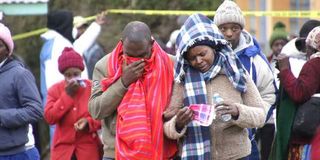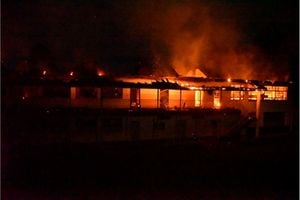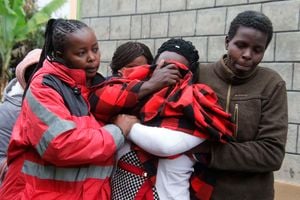
They are tales of agony and young lives snuffed out in raging fires, sparking outrage that sadly did not sting enough to prevent a recurrence.
With every incident, the government comes up with “stringent” measures to prevent another. The Hillside Endarasha Academy inferno reignited the embers of deaths by fire and failure to make changes.
In July 1991, St Kizito Secondary School Tigania, Meru County, made headlines when 19 schoolgirls died in a mass rape.
Then came the 1998 Bombolulu Girls Secondary School tragedy. Twenty six girls perished the fire and stampede as they attempted to escape. Reports indicated the dorm was crowded.
It was also established that one of the two dormitory doors was locked from the outside. The 10 windows had grills, with the absence of fire extinguishers not helping much.
The institution was later renamed Mazeras Memorial Girls School.
The country was in mourning in 1999 yet again, with Nyeri High School being the focus. Resentful boys set fire to a cubicle with four prefects. Witnesses said the students locked the prefects in the main cubicle at the dormitory as they slept, doused it with petrol and lit matches.
Investigations later established that students on suspension had sneaked back to the school to seek revenge against those they blamed for the disciplinary action taken against them. Save for one jailed for life, the rest of the accused were set free.
Kyanguli Secondary School in Machakos County witnessed ghastly incident in 2001. Some 67 boys lost their lives. The shocking incident was believed to be the work of two 16-year-olds.
The building housed more than 100 boys aged 15 to 19.
Survivors said students were angered by the decision of the administration to insist on settling fee arrears and the cancellation of the national examination results the previous year.
Some learners accused the administration for the cancellation of the examination results while others blamed it on a hostile learner-teacher relationship.
The boys implicated in the inferno were not punished as their case was declared a mistrial.
A fire at Endarasha Boys Secondary School reawakened the nation in 2010. Two Form One students died in the dormitory blaze on October 17.
In August 2012, eight students died in a dorm fire at Asumbi Girls Primary School, Homa Bay County. The windows had grills and the building lacked an emergency exit. There were reports of the dormitory having been locked from outside.
A fire incident rocked the capital in 2017, with 10 Form One students at Moi Girls High School dying. The 14-year-old learner behind the fire was reportedly troubled.
She is said to have begged her parents to transfer her to a different school on many occasions. On September 1, the girl set Kabarnet dormitory on fire. Justice Stella Mutuku gave her a five-year prison term for manslaughter.
More than 60 schools in 32 counties experienced riots and arson in two months in 2018. Luckily, no deaths were reported.
Reasons cited for arson in schools include autocratic rule and unaccountable styles of management and poor diets.
Task forces have made recommendations on tackling school fires, but these have barely been acted upon.








